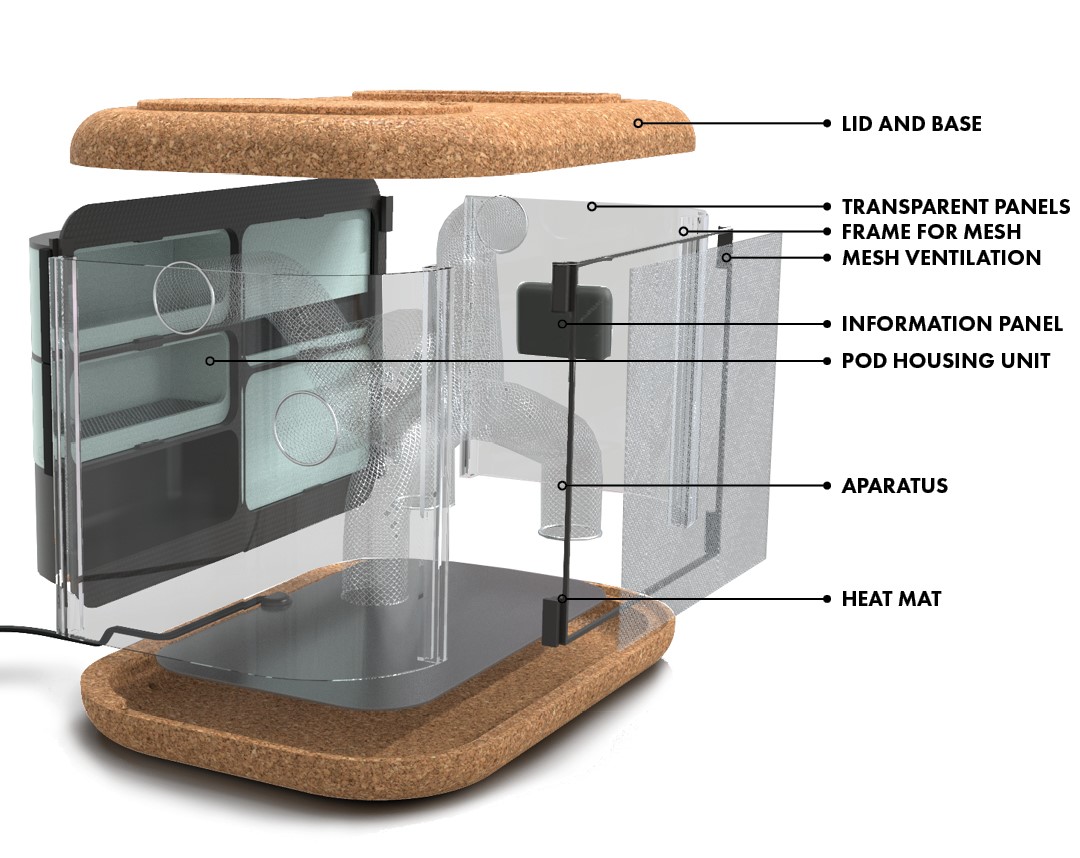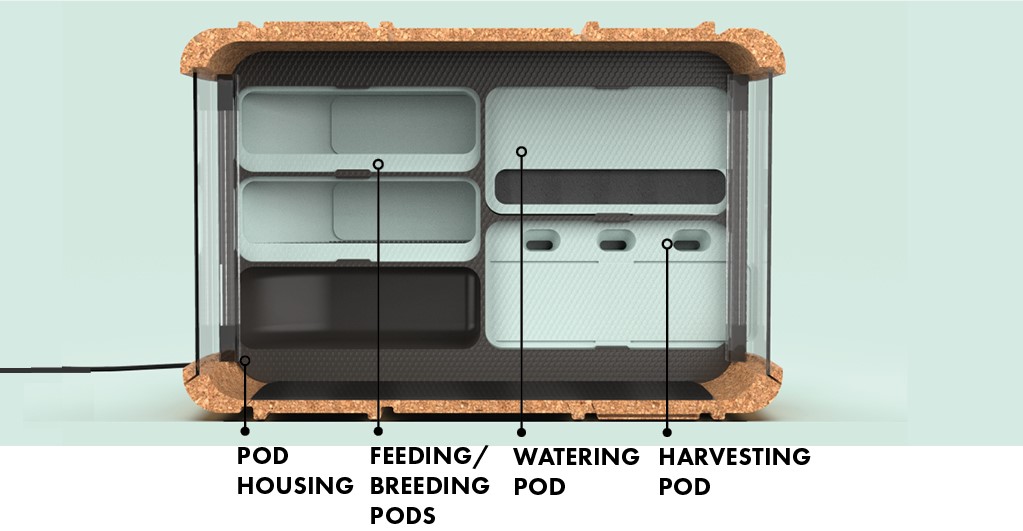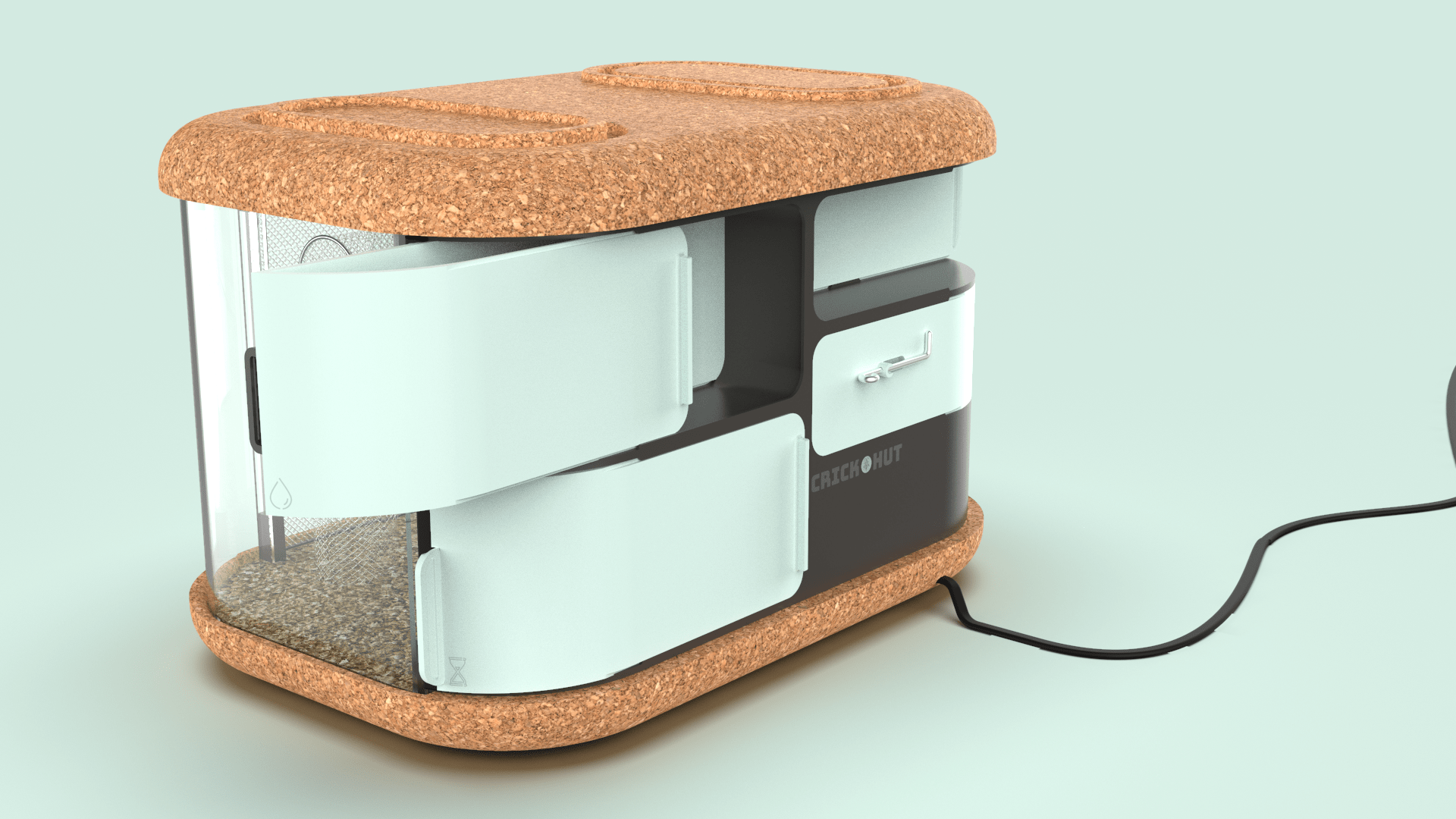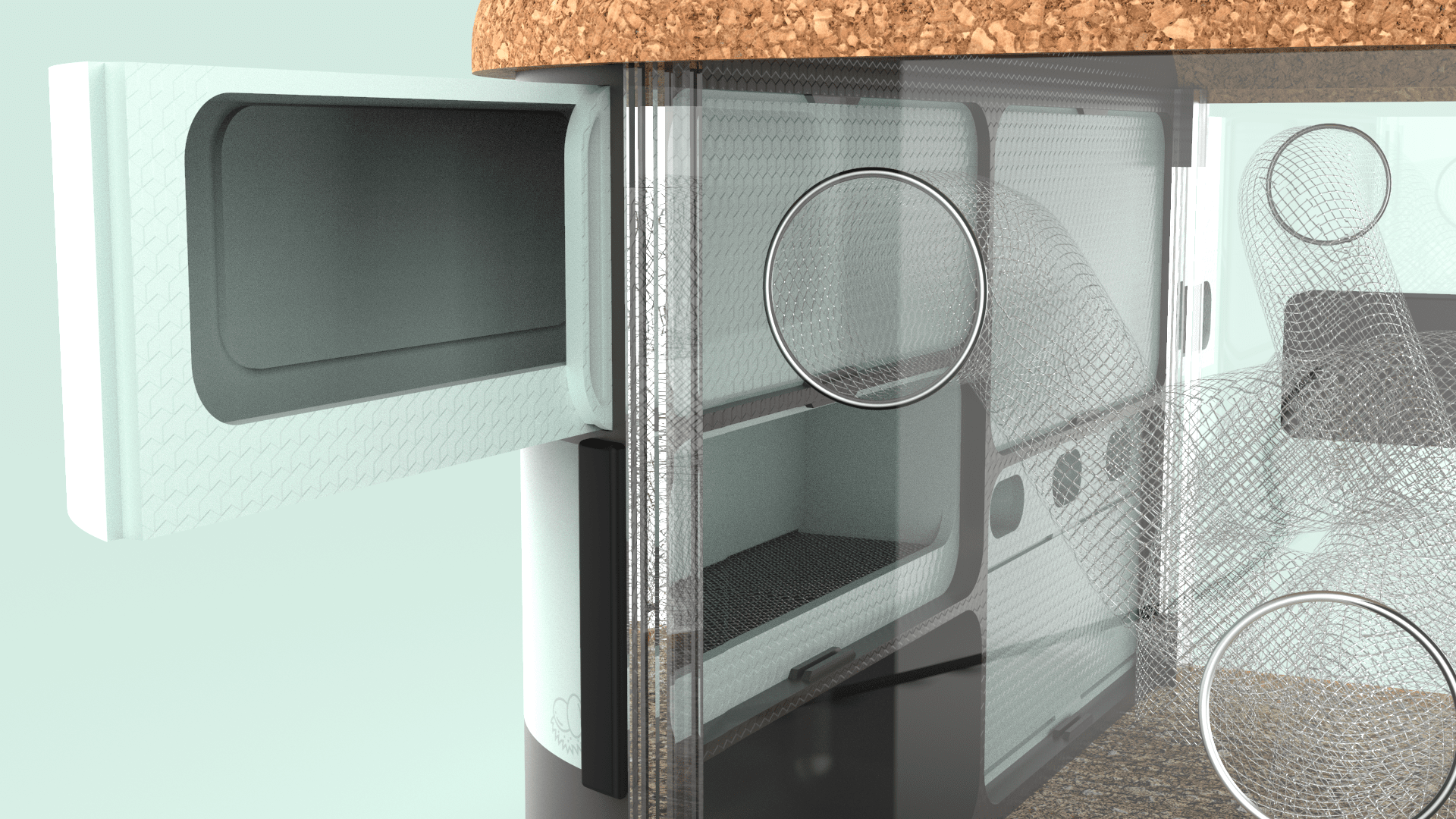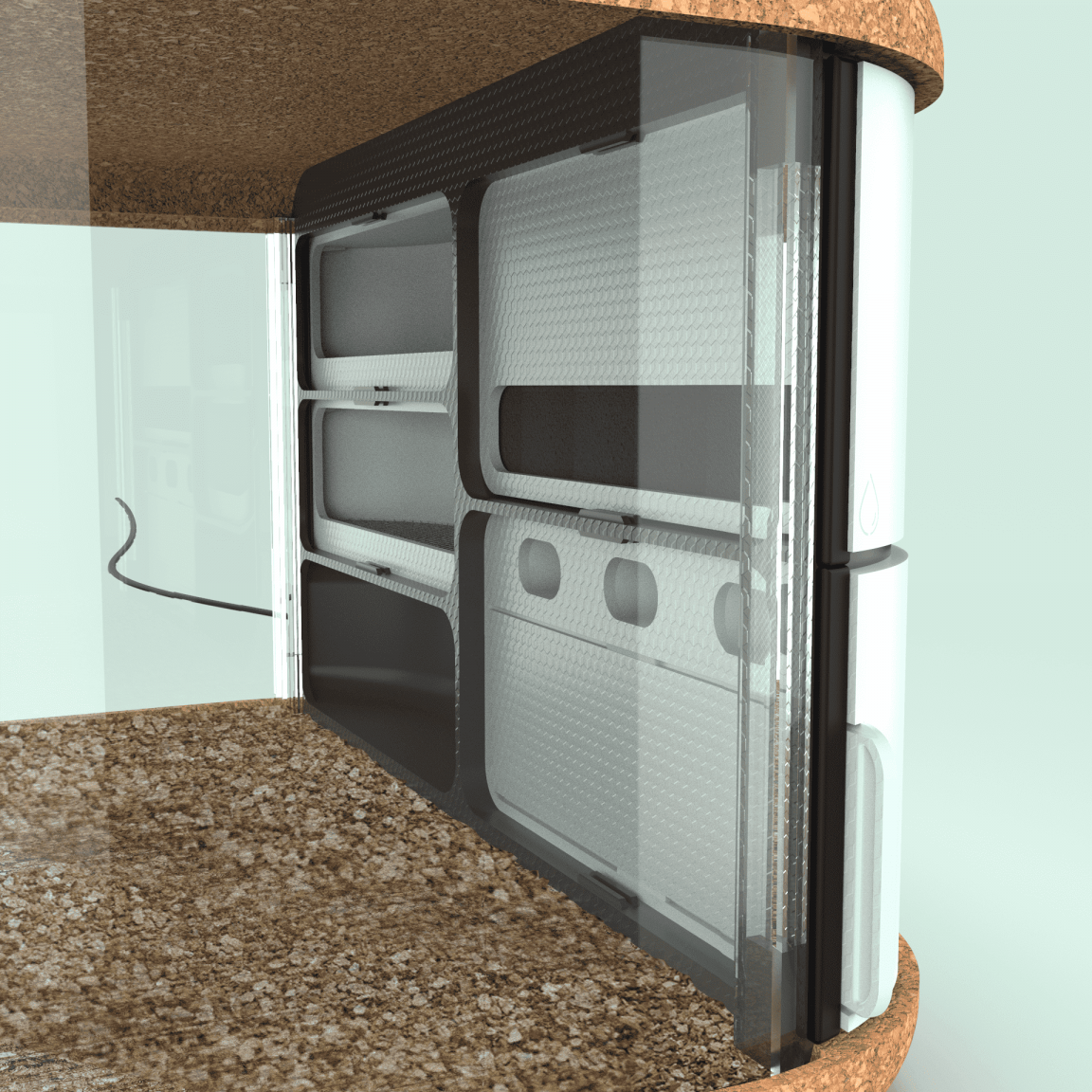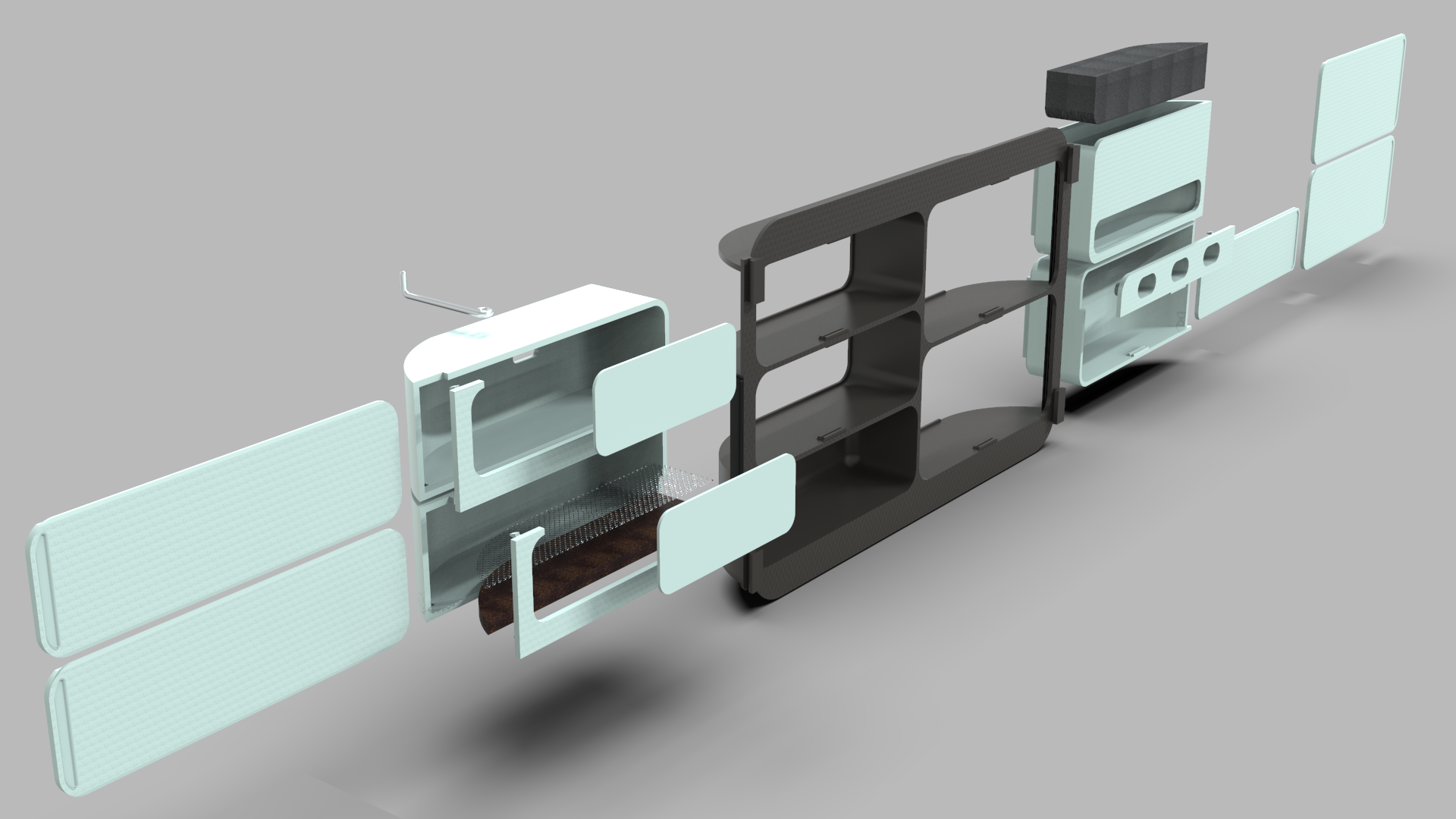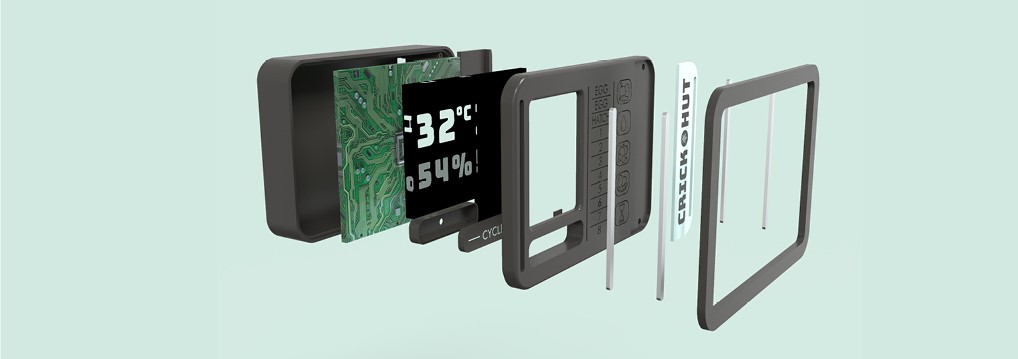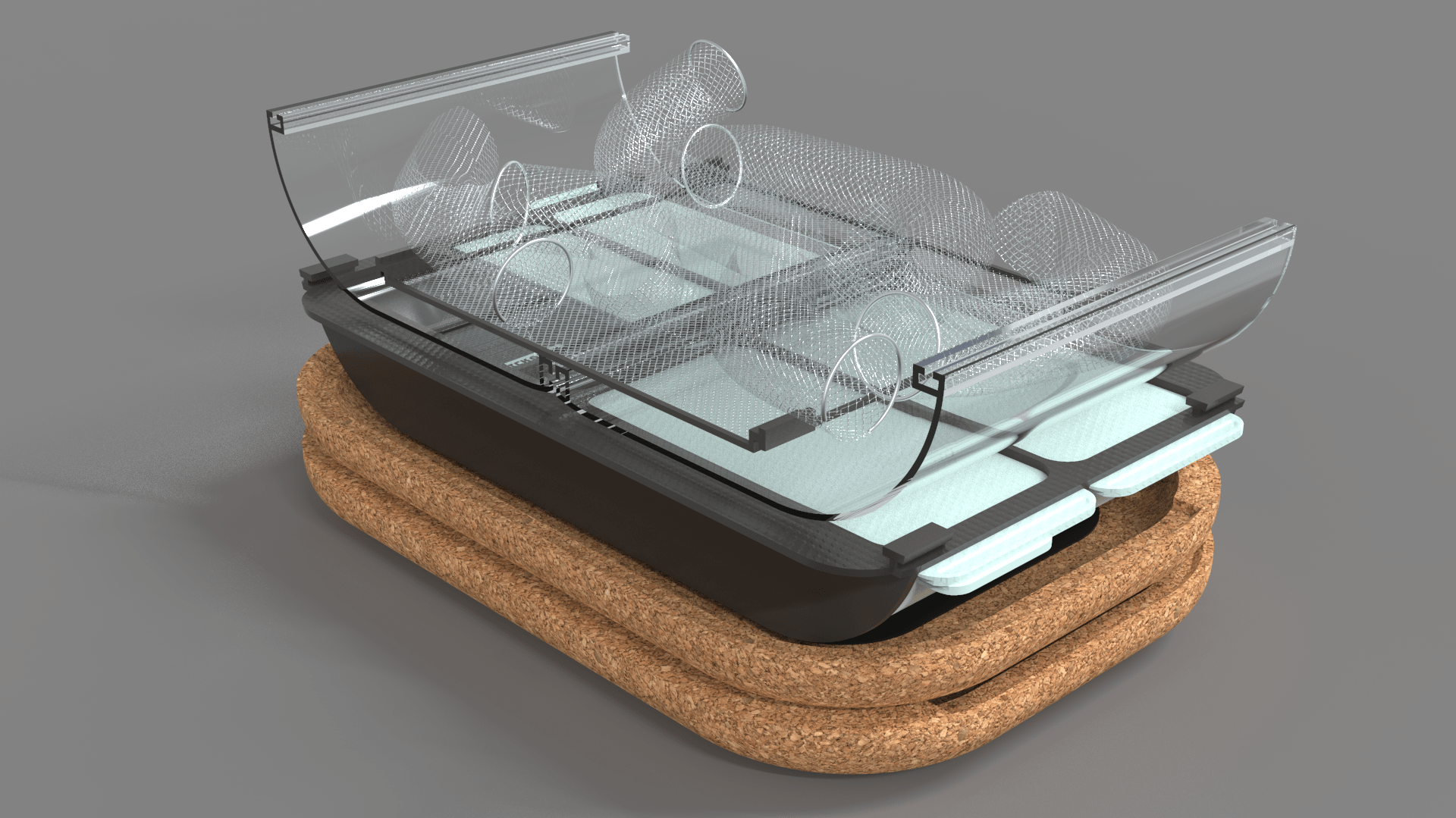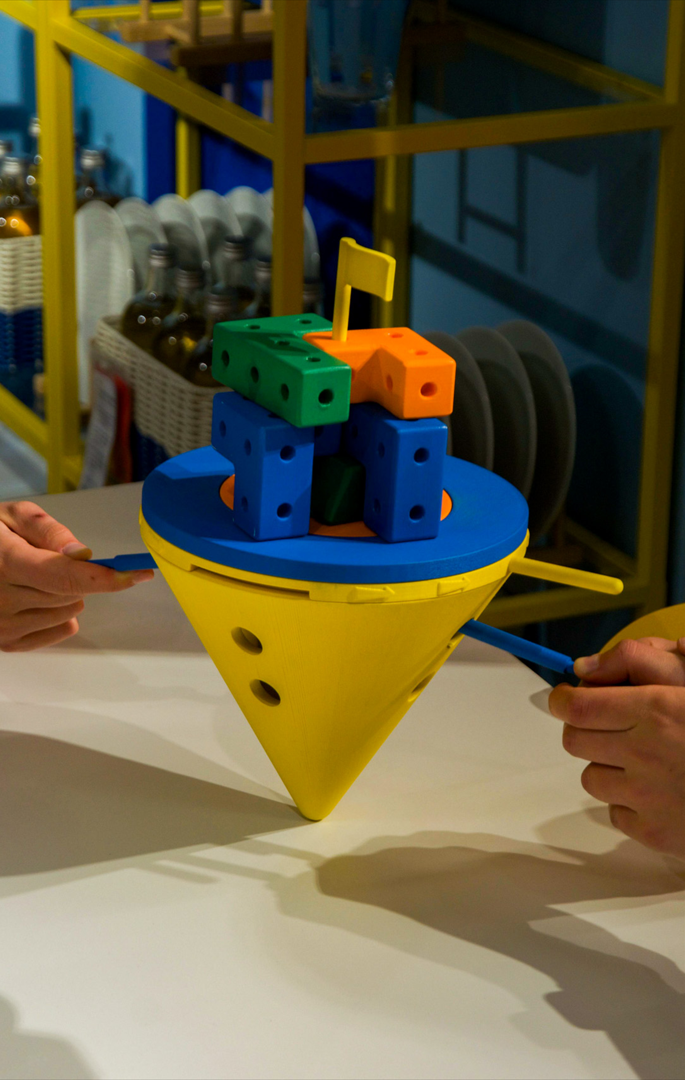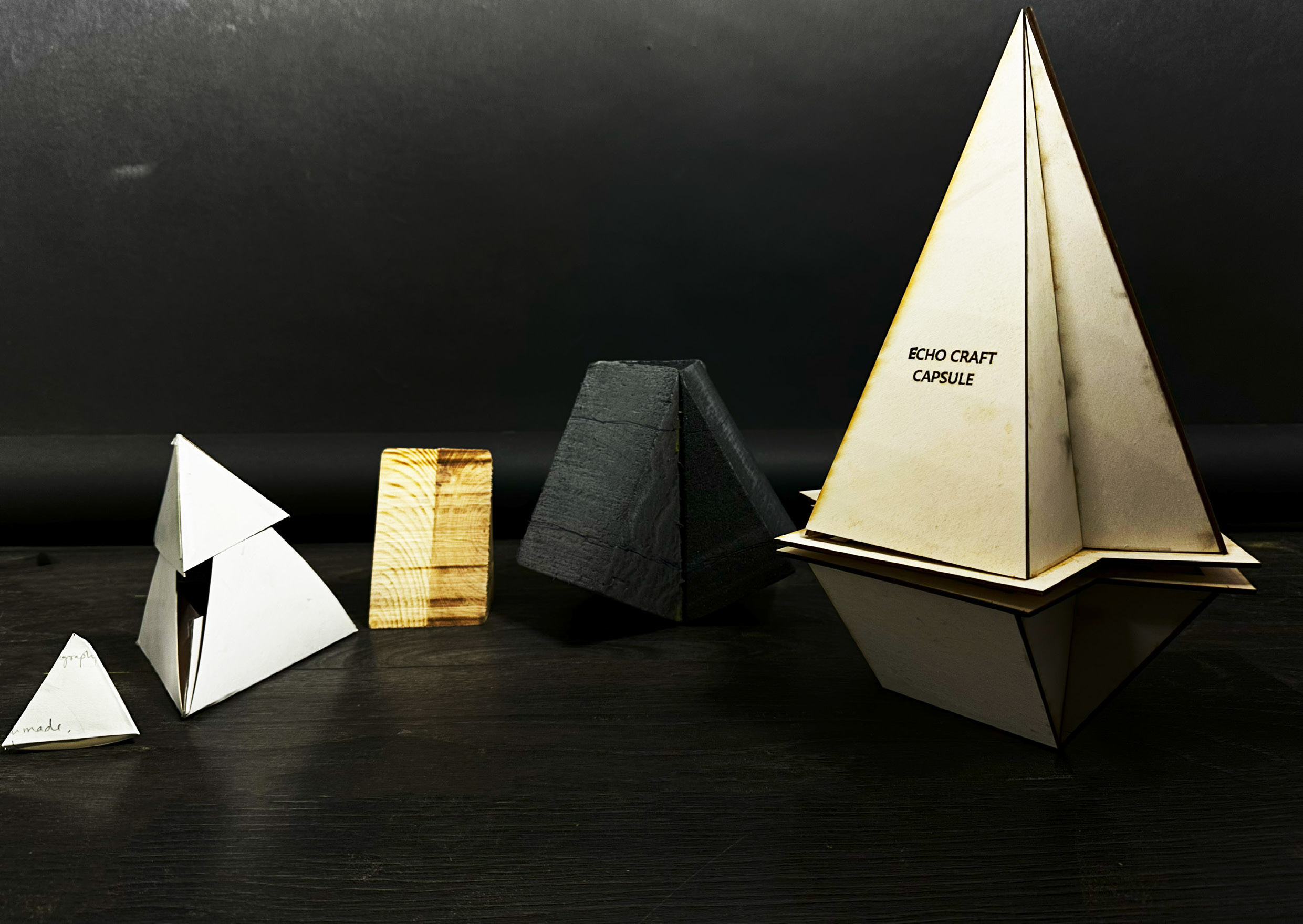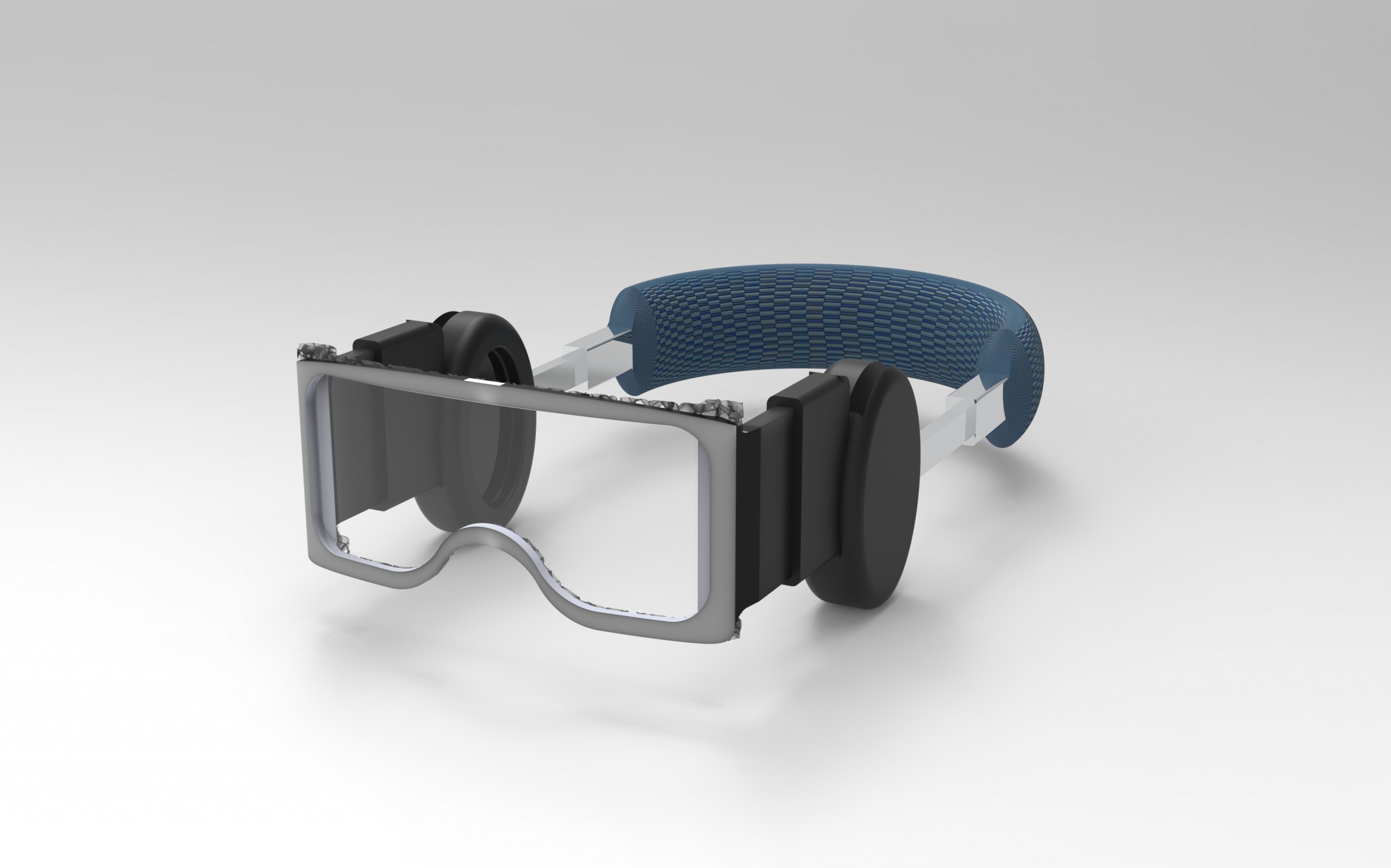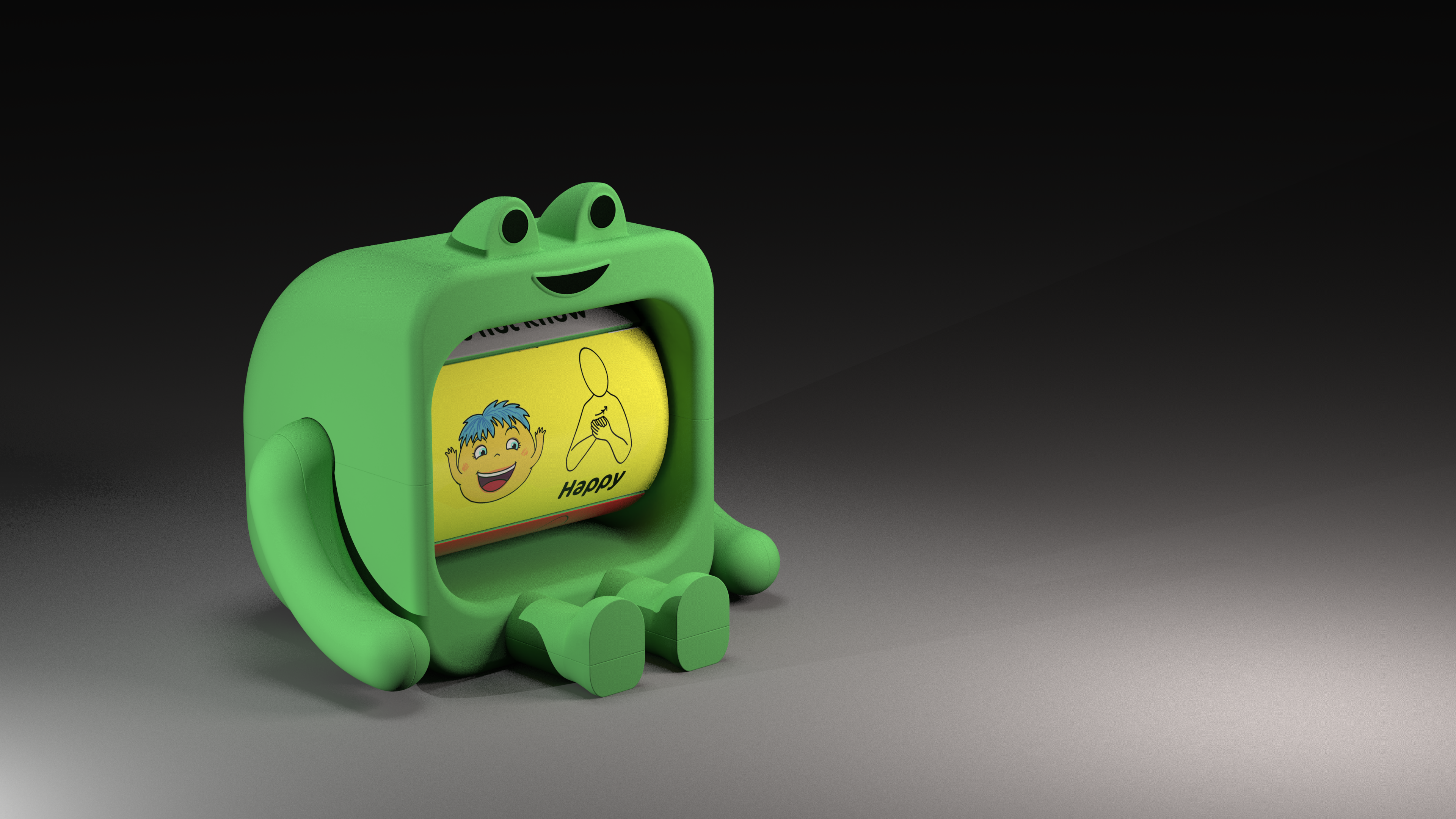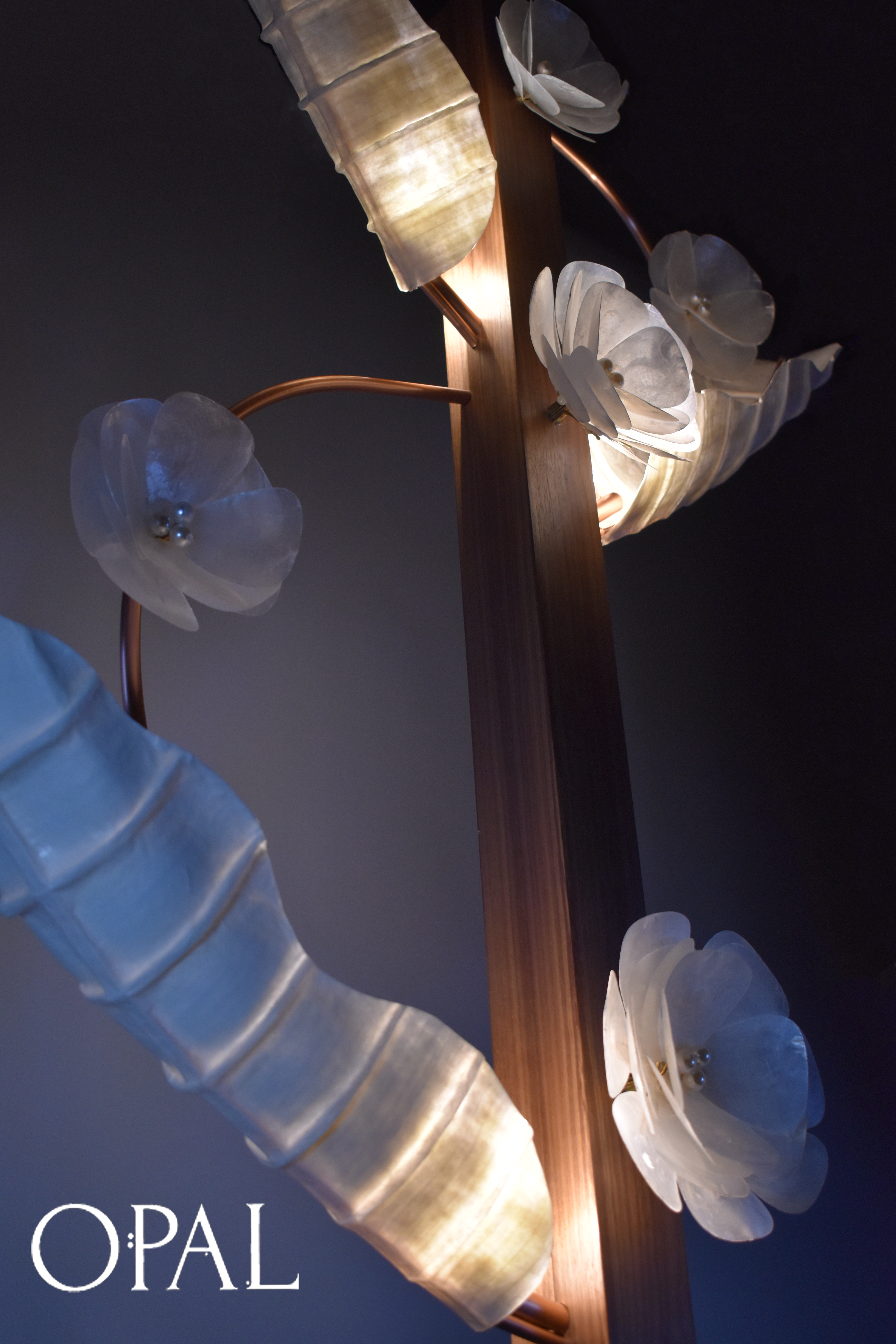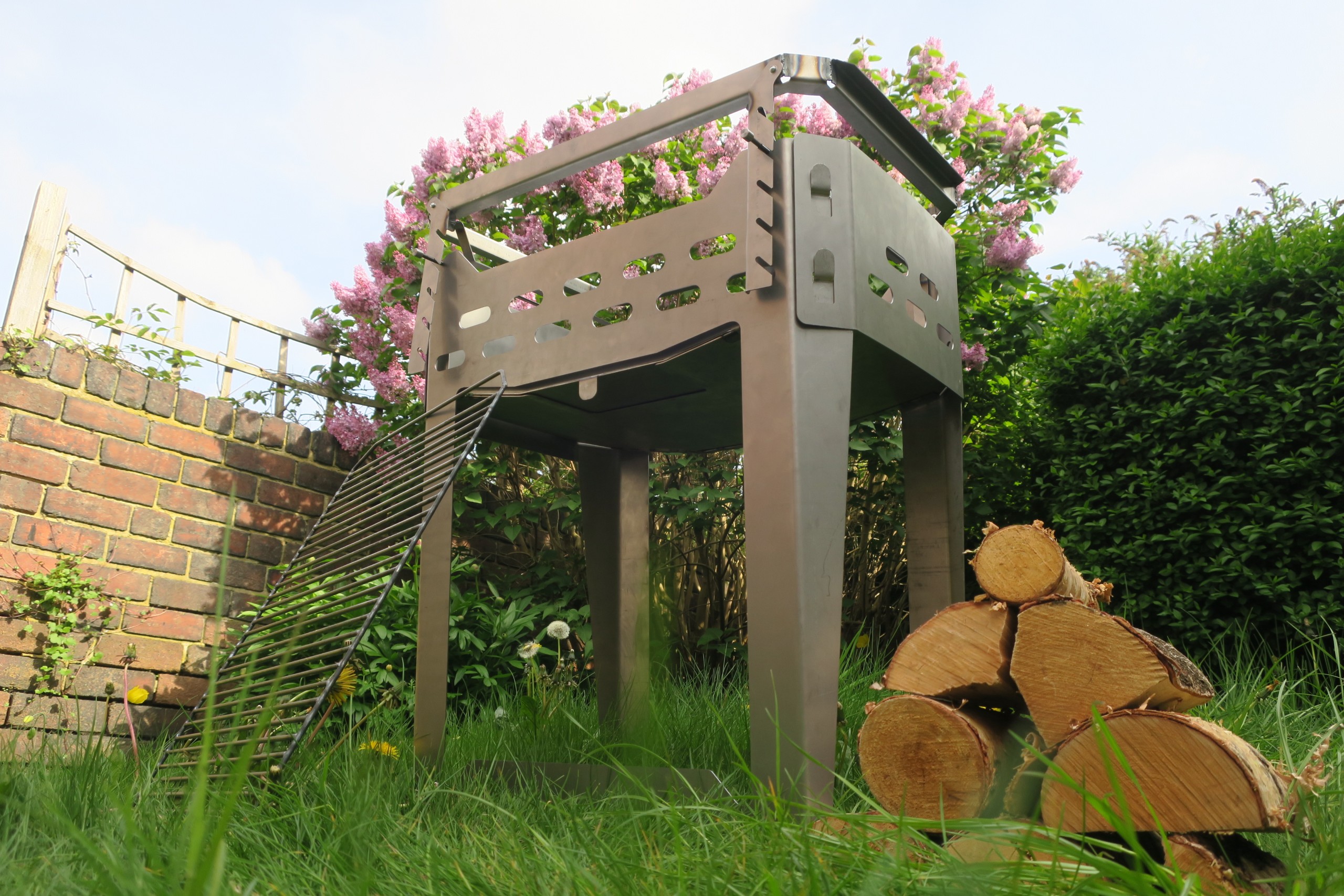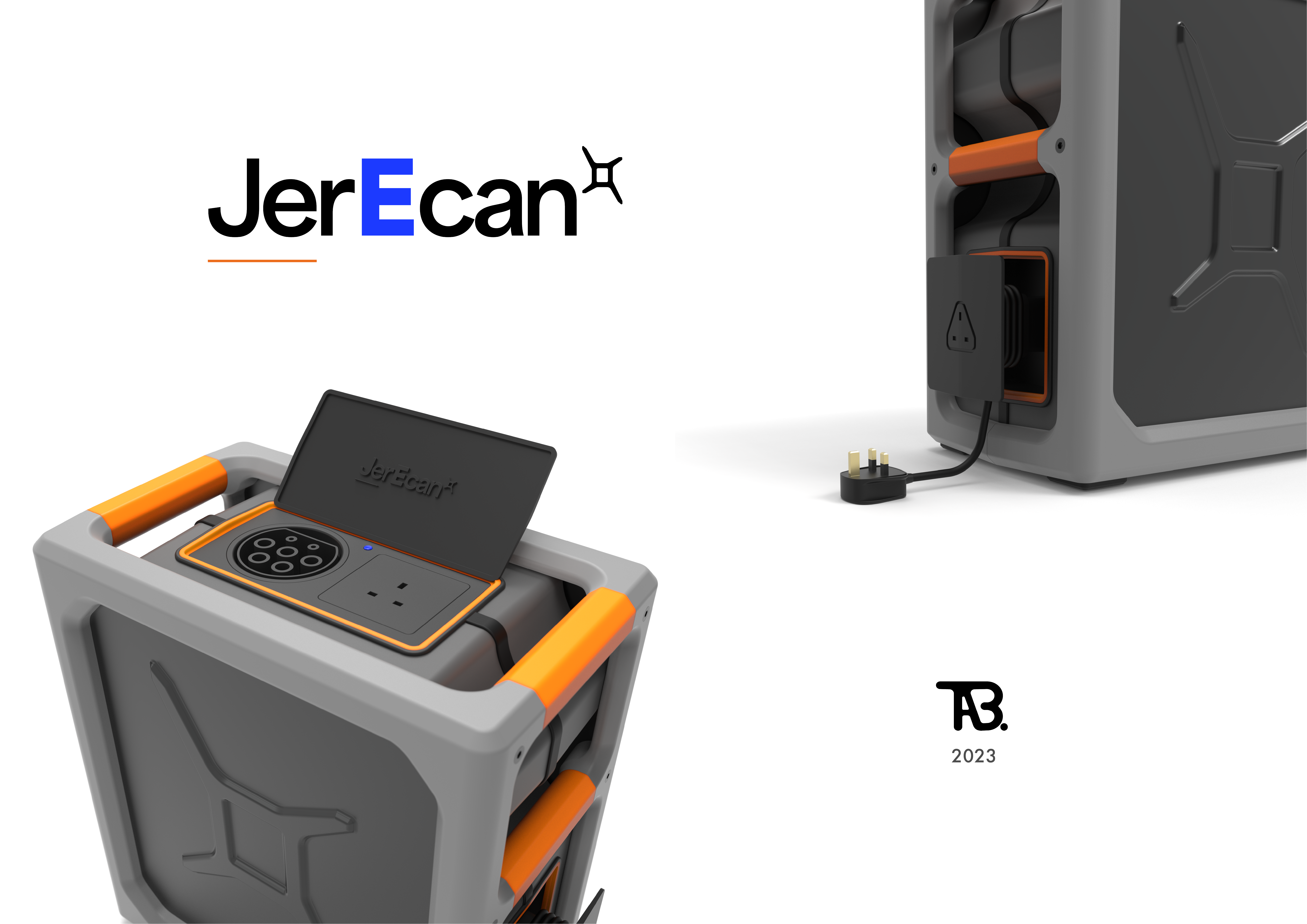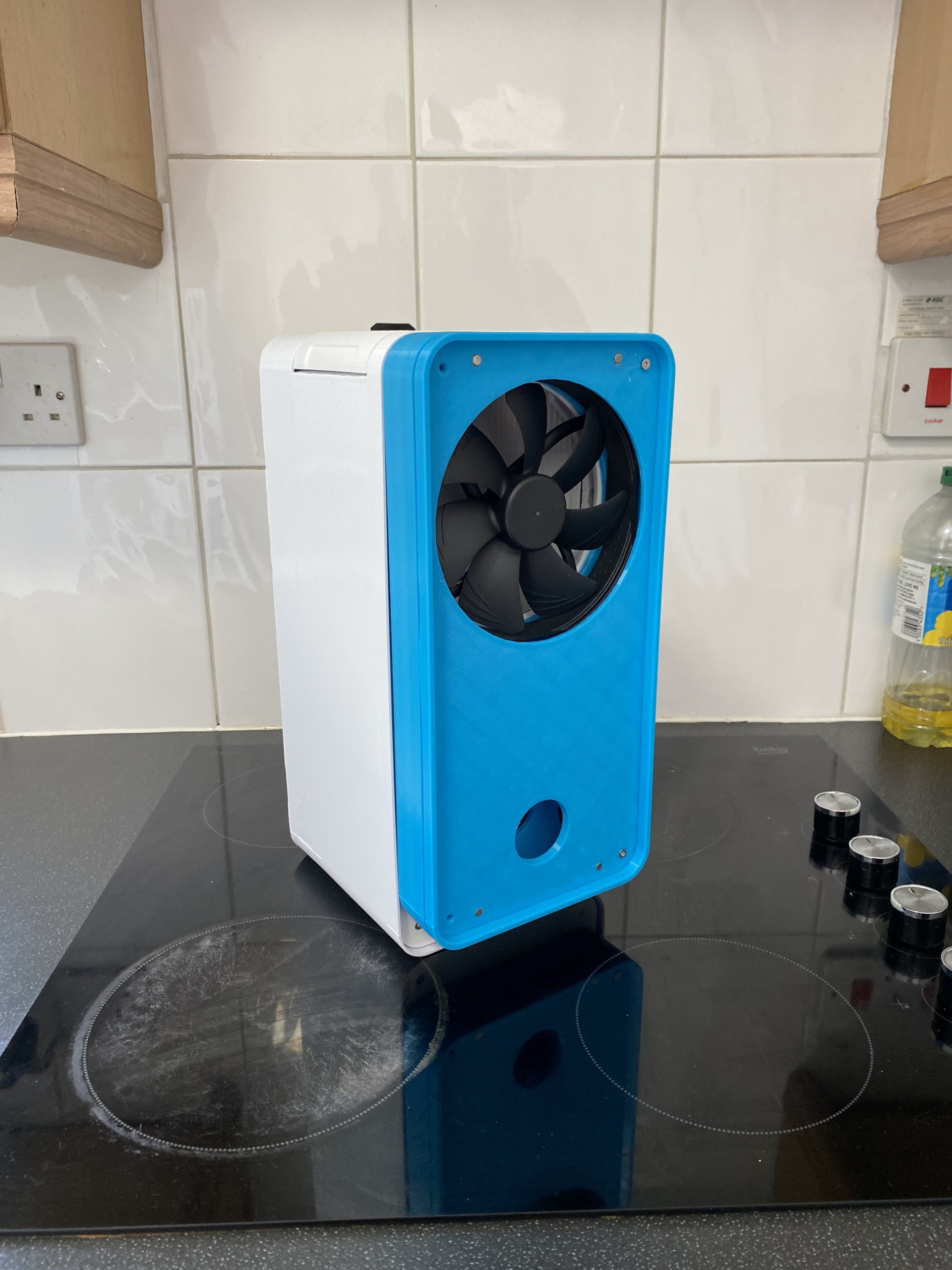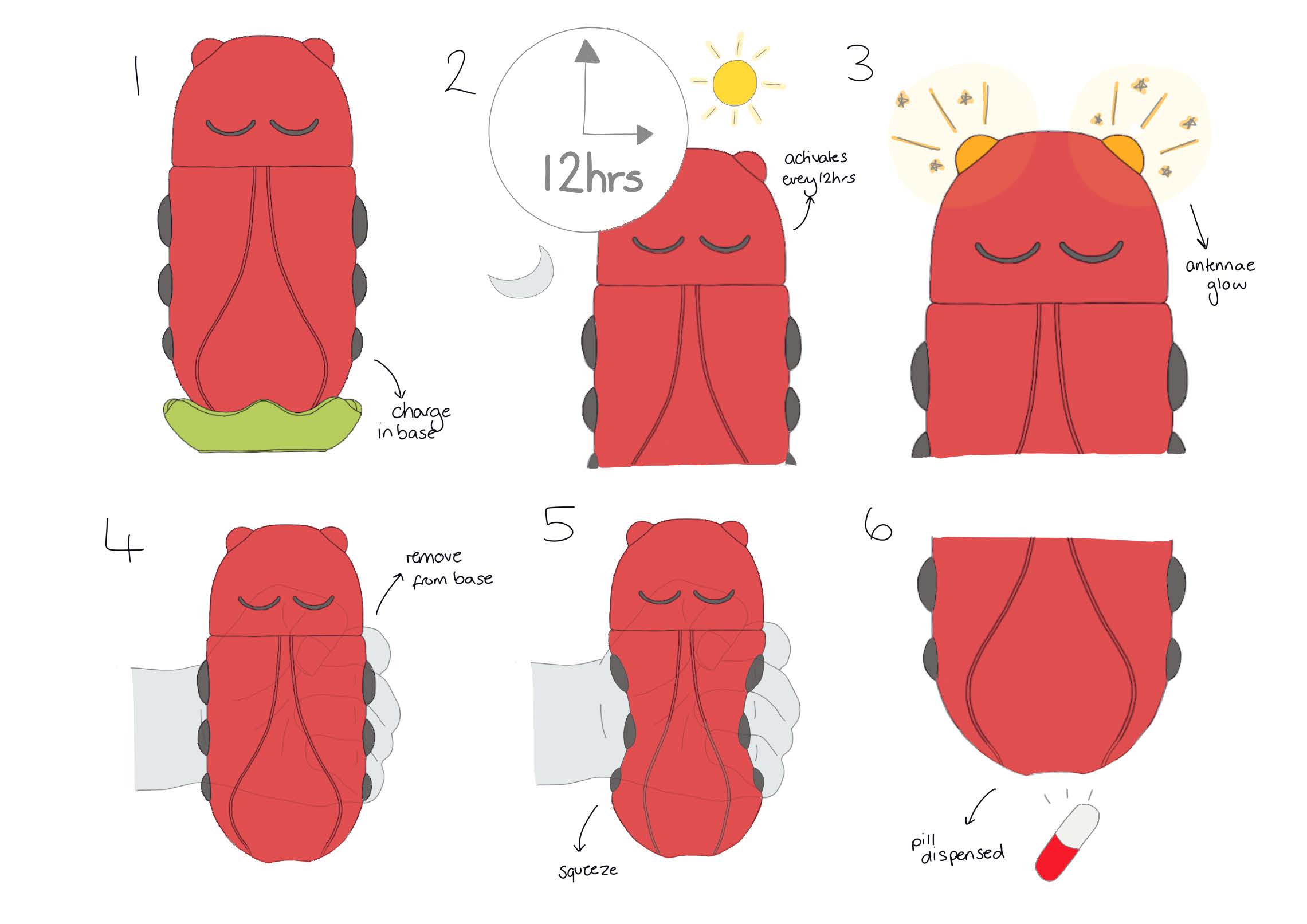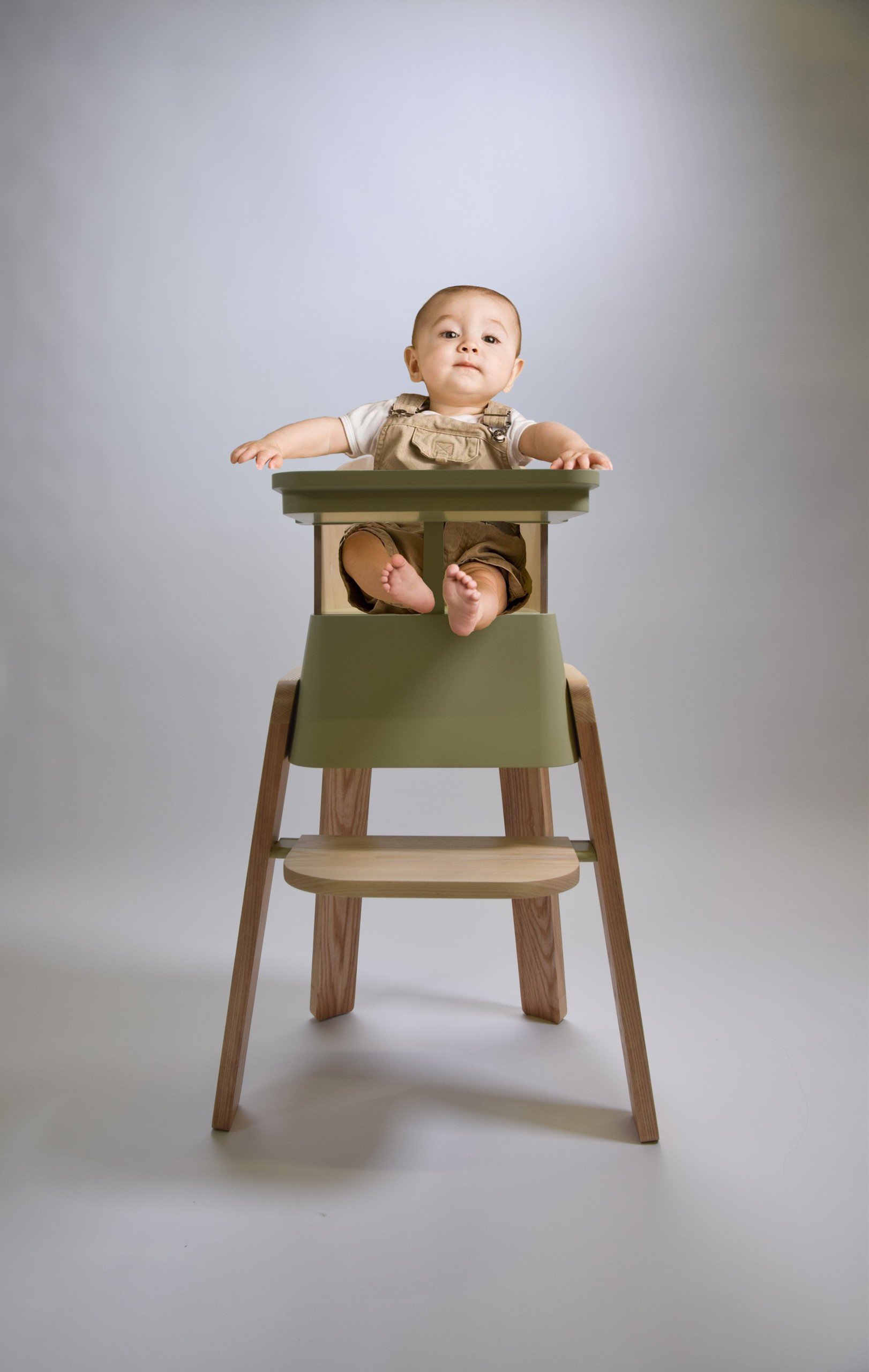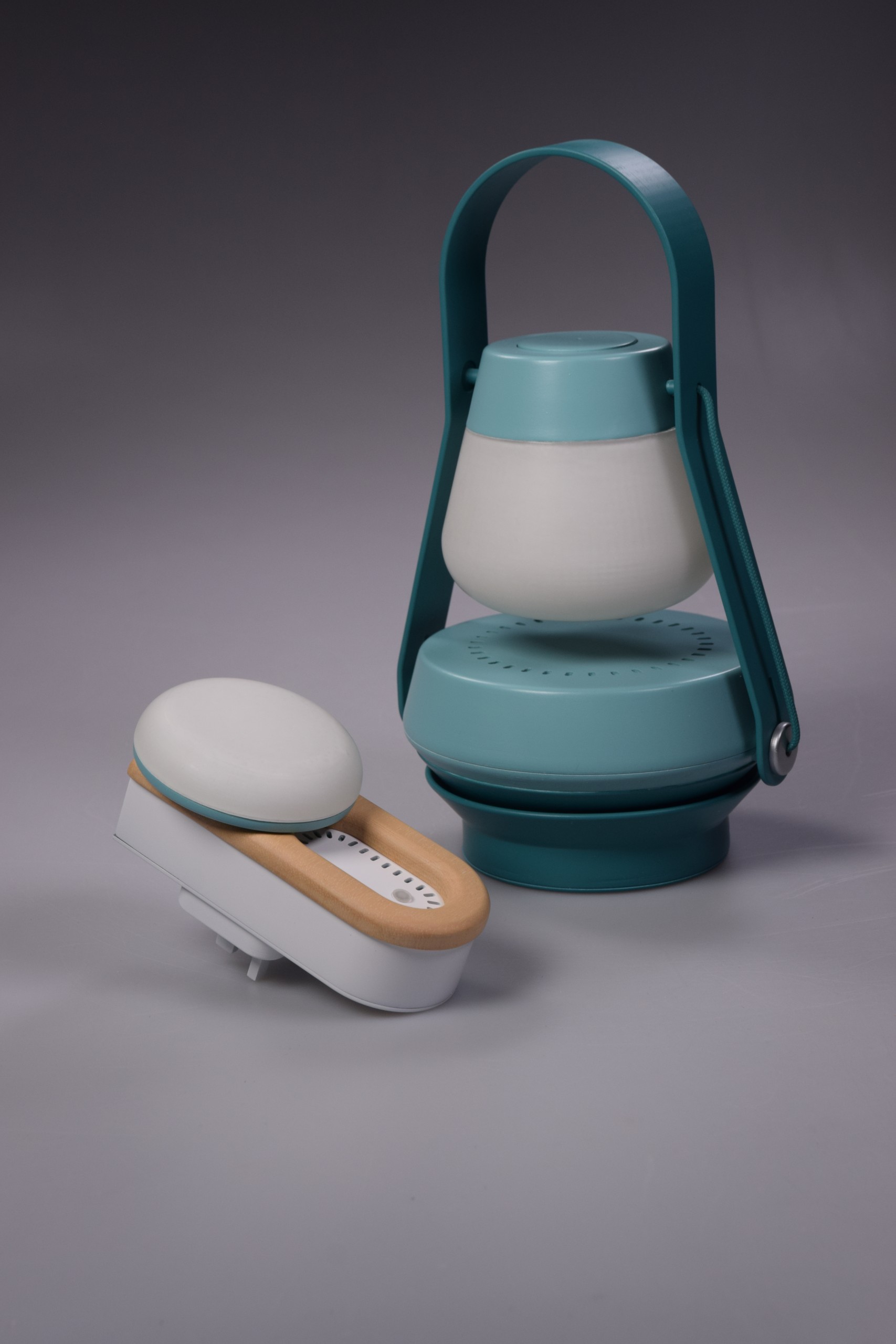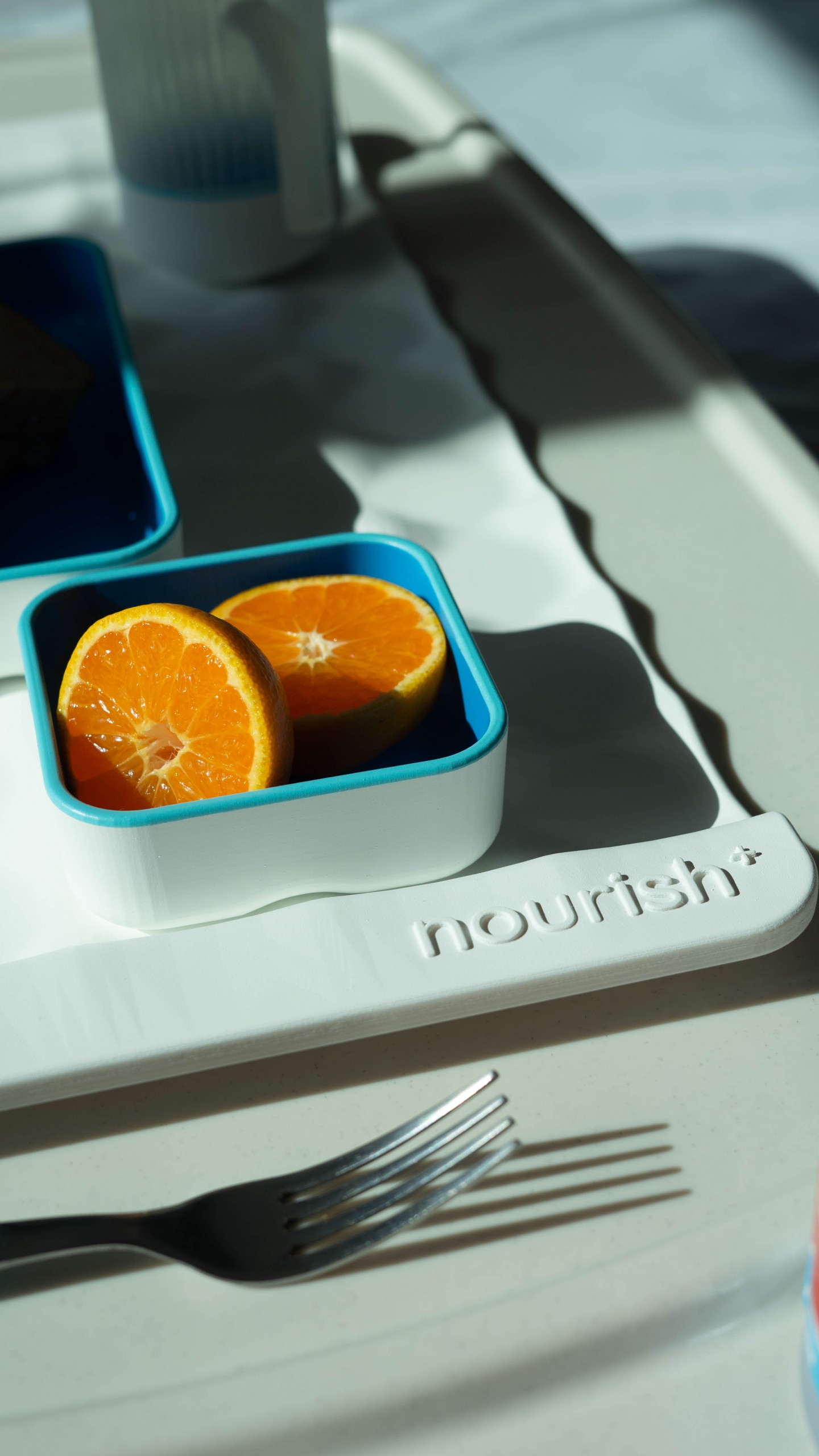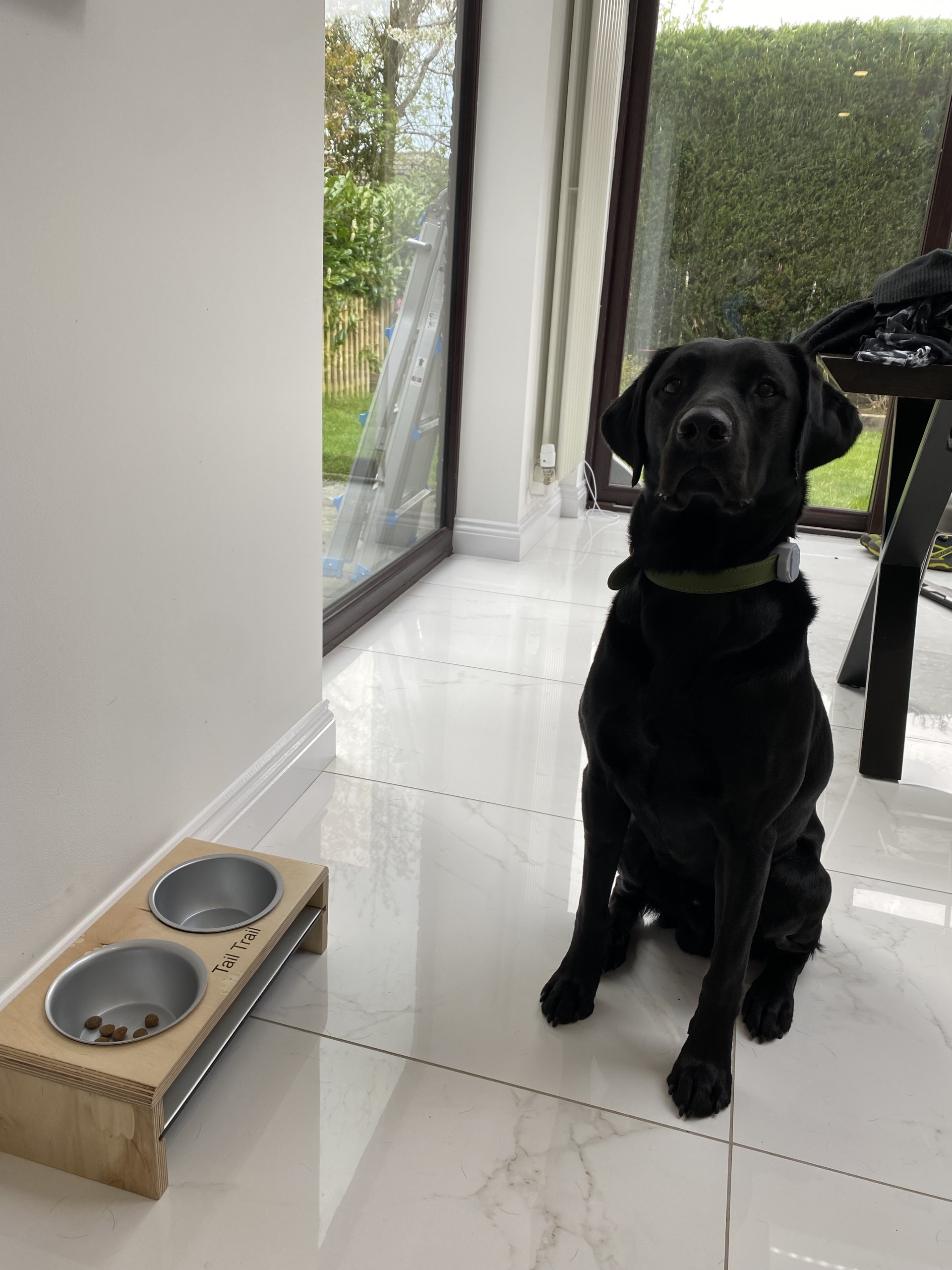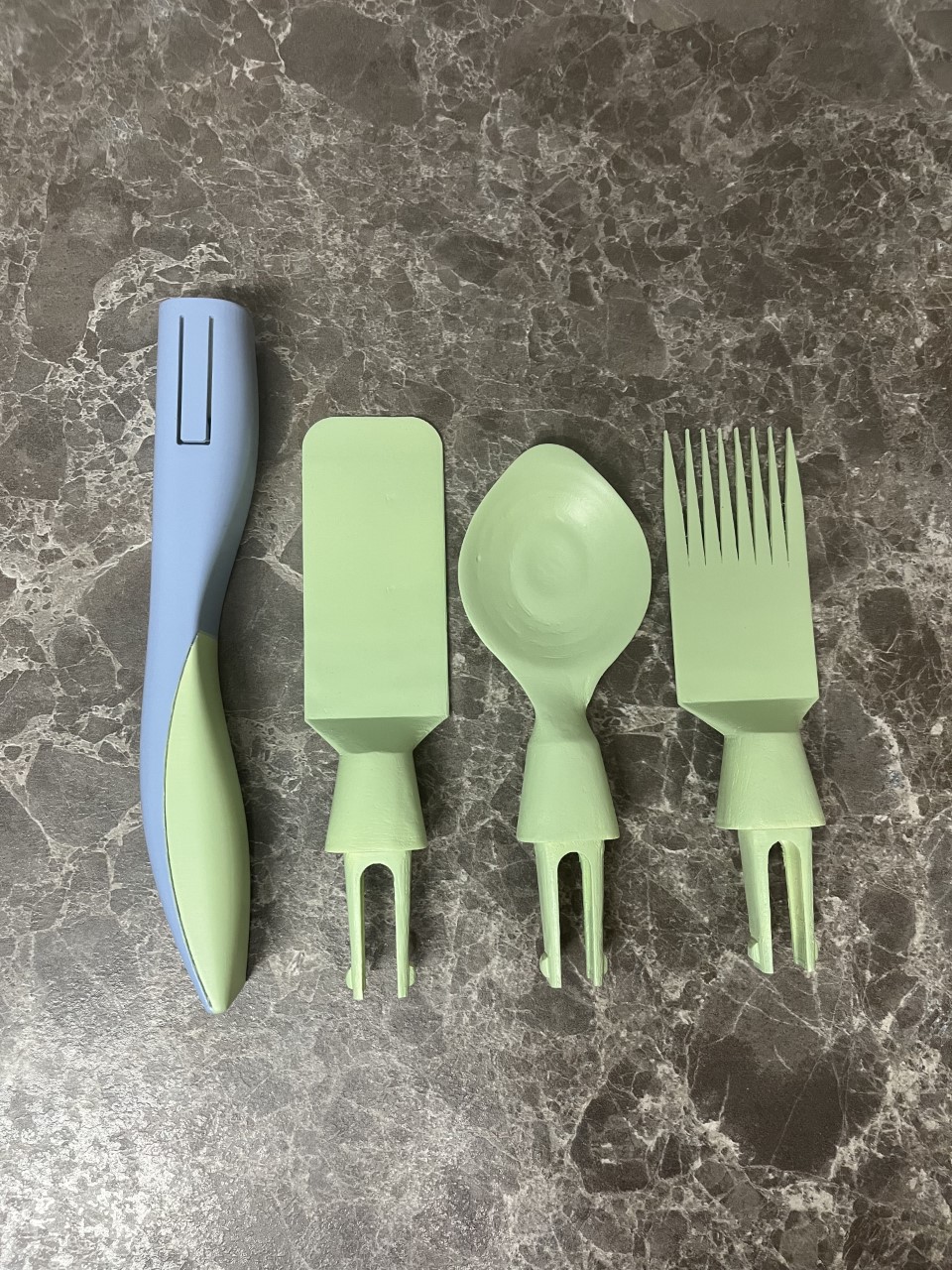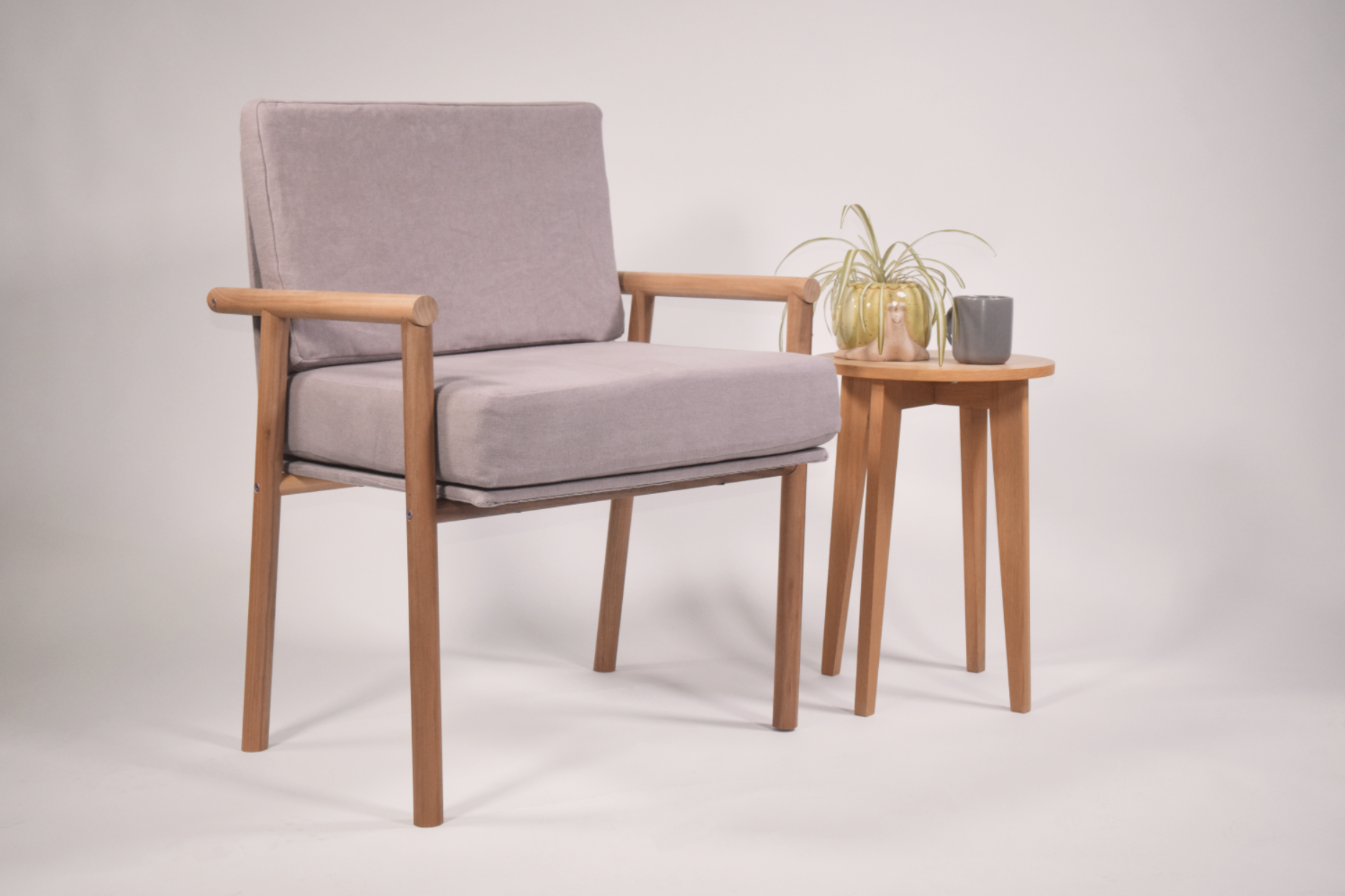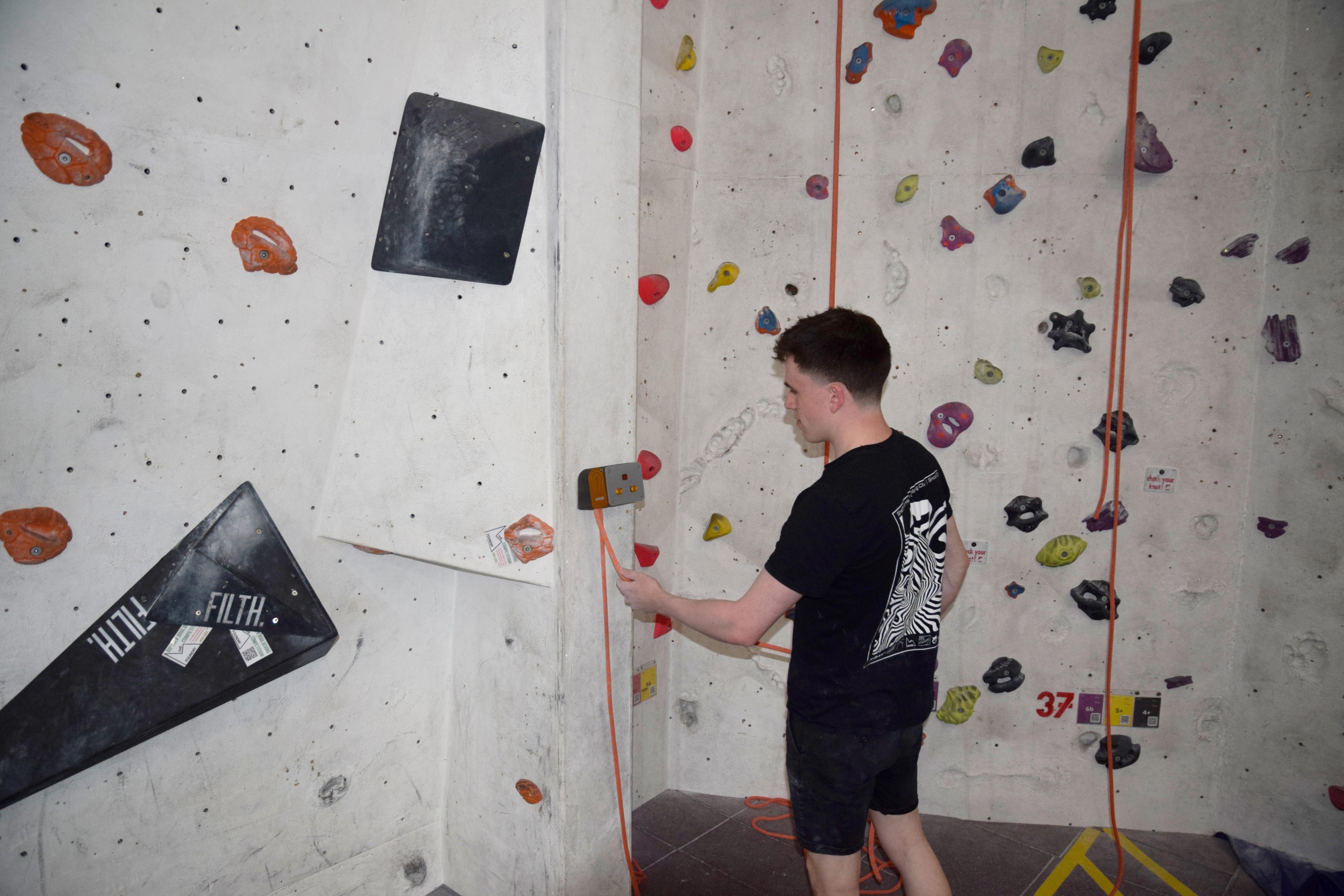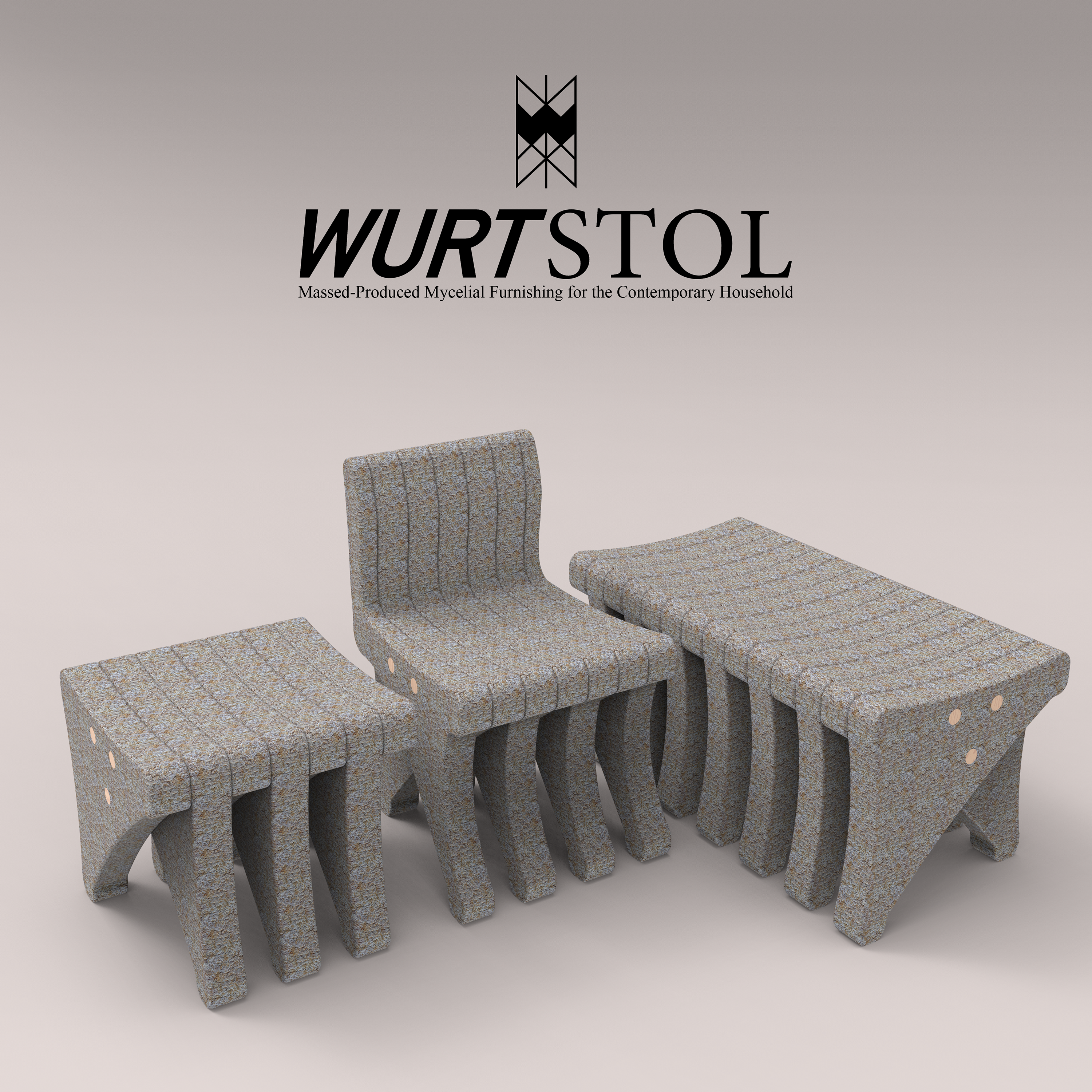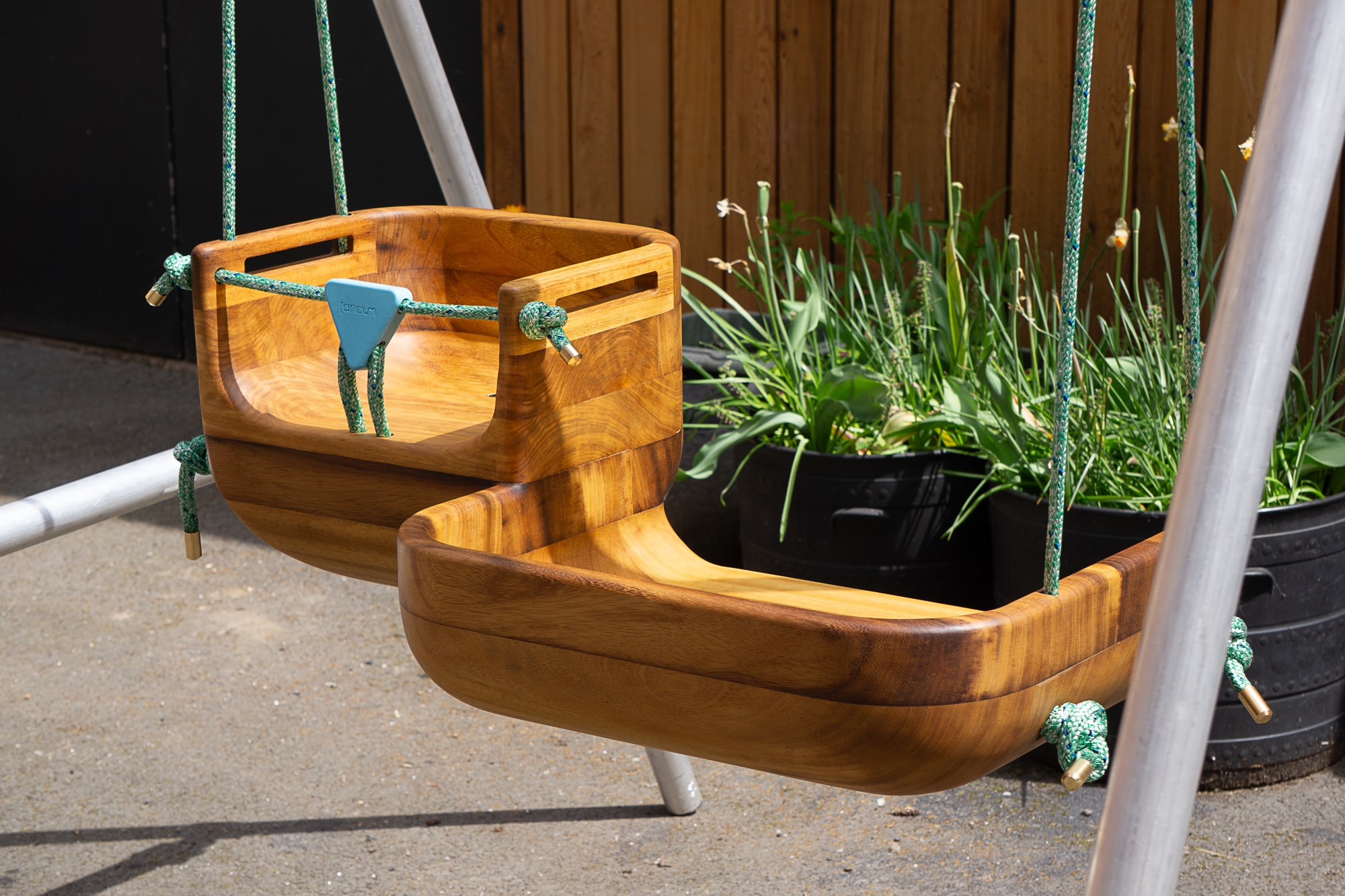
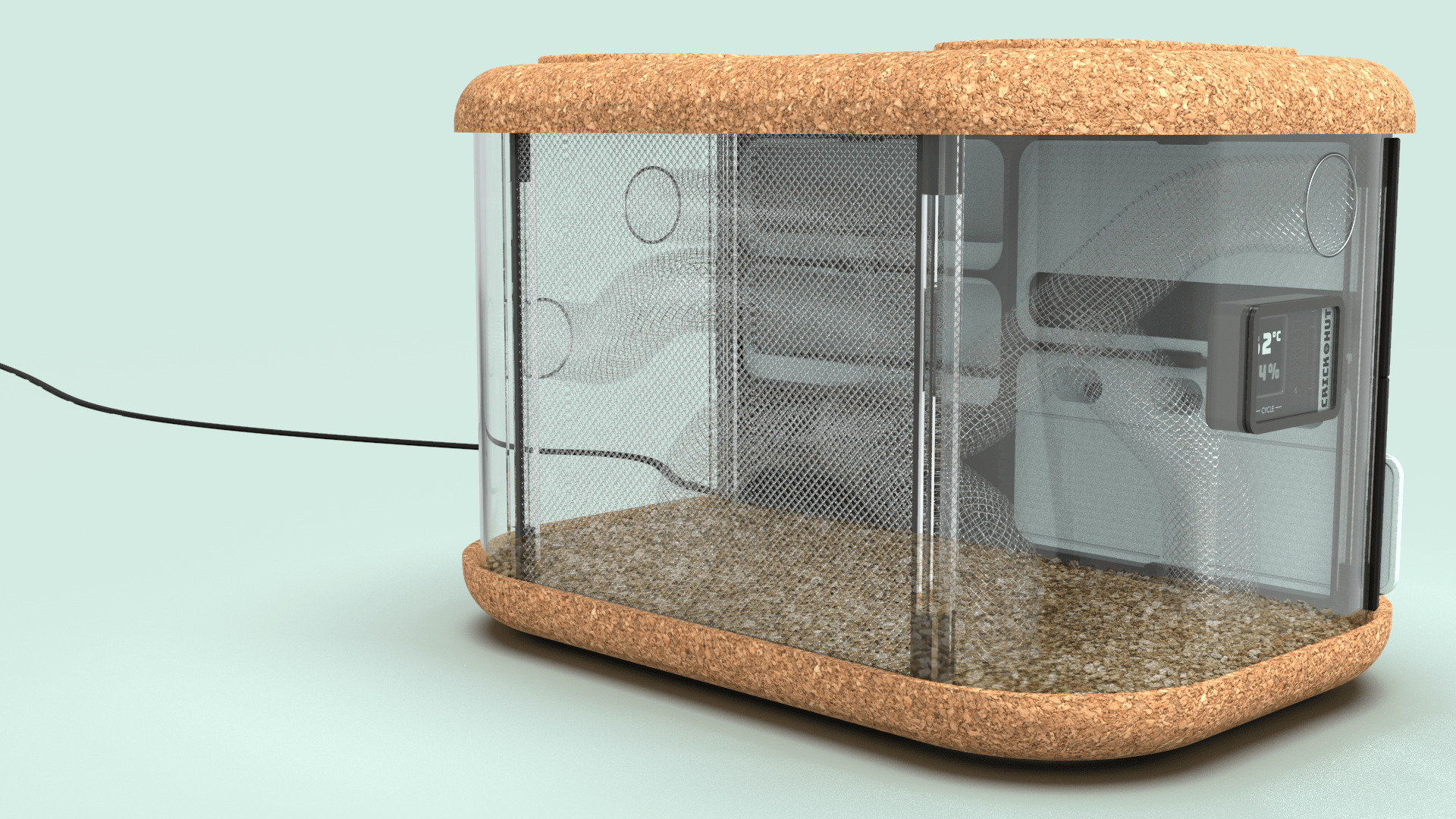
Crick•Hut is an enclosed environment designed by Emily Tavanyar to make cultivating crickets at home efficient, pleasant, and clean.
By 2050 the world’s population is projected to reach 9.8 billion people, with food production projected to increase by 60% to accommodate this. With our planet already suffering from deforestation and pollution produced by agriculture, we need an alternative method for producing high protein sustainable food.
Edible insects offer a unique solution; to produce the same amount of food they require 90% less land space than cattle and provide a far higher protein content. Crickets are harvested at the end of their natural 8-week lifespan, they can be fed vegetable scraps and the old bedding can be used to nourish plants and crops.
This product takes the fuss out of small-scale cricket farming and empowers the user to enjoy healthy, sustainable food straight from home. Depending on how much protein is being substituted in meals, the units can be stacked to make increasing the quantity easy. Detachable sliding pods eliminate the need to open the enclosure inside the home, making maintenance easy and escapees improbable, while the user-friendly information panel notifies the user of what action needs taking and when.
Tavanyar feels strongly that design should result in “products that have a meaningful and positive impact on the environment and our everyday lives”. This unconventional project challenges conventional approaches to, and attitudes about, food consumption and production. “It was exciting to test existing consumer pre/misconceptions and really embrace the unconventional. Throughout the development process considerations were consistently made to favour the wider aims of the project, especially the inherent sustainability ethos”.
Tavanyar spent her placement year at Touratech GmbH in Germany designing and aiding in the manufacturing of accessories for a variety of motorbikes.

